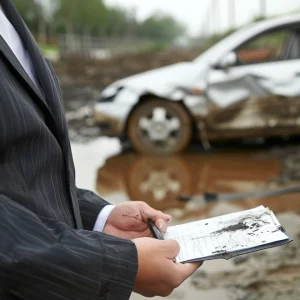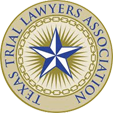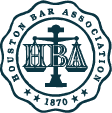Navigating the aftermath of a car accident in the Lone Star State can be as complex as the bustling highways that crisscross its expansive terrain. In the blink of an eye, a collision can upend lives, leaving a trail of physical, emotional, and financial turmoil. Amidst the chaos, one critical aspect stands out as a beacon of resolution: establishing liability. Understanding who is at fault is crucial, not only for the peace of mind of those involved but also for the legal and financial repercussions that follow.
This comprehensive guide delves into the intricacies of Texas auto insurance laws, the nuances of negligence, and the legal procedures that are pivotal in establishing liability after a car accident in Texas.
Understanding Texas Auto Insurance Laws
In Texas, as in many states, drivers are required by law to demonstrate financial responsibility in the event of an accident. This is typically achieved through auto liability insurance, a safety net that cushions the financial blow by covering damages for which the policyholder is responsible. The Texas Department of Insurance mandates a minimum coverage, often referred to by its numerical shorthand, 30/60/25:
- $30,000 for bodily injury per person
- $60,000 for total bodily injury per accident
- $25,000 for property damage per accident
Failure to carry this coverage can lead to significant fines, and repeated offenses may result in even harsher penalties. For more information on the legal requirements and implications of auto insurance in Texas, consider consulting with a knowledgeable Houston car accident attorney.
Types of Auto Insurance Coverage in Texas
When selecting auto insurance, Texans have a variety of coverages to choose from, each serving a distinct purpose:
- Liability Coverage: This is the backbone of auto insurance, covering other parties’ medical and repair costs if you’re at fault.
- Collision Coverage: It handles the costs of repairing or replacing your vehicle after an accident.
- Comprehensive Coverage: This option extends to non-collision incidents, such as theft or natural disasters.
- Medical Payments Coverage: It provides for the medical expenses of you and your passengers, regardless of fault.
- Personal Injury Protection (PIP): PIP goes a step further, covering not just medical expenses but also lost wages and other non-medical costs.
- Uninsured/Underinsured Motorist Coverage: This kicks in when the at-fault driver lacks sufficient insurance.
Additional coverages such as Towing and Labor and Rental Reimbursement can also be included for added security. Understanding these coverages is paramount, as they play a significant role in establishing liability and ensuring adequate protection in the event of an accident.
The Role of Auto Insurance in Establishing Liability
After a car accident, the process of establishing liability begins with an insurance claim. When a claim is filed, insurance adjusters step in to evaluate the circumstances and determine who is at fault. This assessment is based on evidence collected from the accident scene, witness statements, and other relevant information. The adjuster’s conclusion will influence how damages are covered and to what extent each party’s insurance will pay out.
Comparative Negligence in Texas
Texas follows a modified comparative negligence system, which means that even if you are partially at fault for an accident, you may still be entitled to some compensation. However, if you are found to be more than 50% responsible, you are barred from recovering any damages. This rule underscores the importance of accurately establishing liability and can significantly impact the outcome of a claim.
Proving Negligence and Fault
At the heart of establishing liability is the concept of negligence. Negligence occurs when a person fails to exercise reasonable care, resulting in harm to another. Common examples include speeding, failure to yield, and driving under the influence. To prove negligence and thus establish fault, various forms of evidence are utilized, such as:
- Police reports: These often contain an officer’s assessment of the accident and may indicate who was at fault.
- Medical records: These document injuries sustained and their relation to the accident.
- Photographs: Images of the accident scene, vehicle damage, and road conditions can be compelling evidence.
- Witness statements: Bystanders who saw the accident can provide objective accounts of what happened.
- Expert testimony: Specialists in fields like accident reconstruction can offer insights into how and why the collision occurred.
Gathering and presenting this evidence is crucial in establishing liability, and having legal representation can make this process more manageable. For guidance on collecting evidence and proving fault, consider consulting resources on how to prove distracted drivers and the impact of severe weather accidents in Texas.
Steps to Take Immediately After an Accident
In the immediate aftermath of an accident, certain steps should be taken to ensure safety and protect your rights:
- Check for injuries: Prioritize the well-being of yourself and others involved.
- Move to safety: If the vehicle is drivable and it’s safe to do so, move to the side of the road to minimize traffic disruption.
- Exchange information: Collect names, addresses, vehicle registrations, insurance details, and driver’s license information from all parties.
- Document the scene: Take photos and notes of the accident, including the location, time, and conditions.
- File a report: In Texas, you may need to complete a Driver’s Crash Report (CR2) if the police do not report the accident.
These steps are not only crucial for safety but also lay the groundwork for establishing liability. Remember, it’s recommended not to give a recorded statement to an insurance company without having legal representation, as this can affect your claim.
Legal Process of Establishing Liability
The journey to establishing liability often traverses through the legal system, especially when the fault is disputed or significant damages are at stake. The police report is a critical piece of evidence, as it provides an official account of the accident, complete with any citations issued for traffic violations. In cases where the insurance coverage is insufficient to cover the damages, or when a fair settlement cannot be reached, filing a lawsuit may be necessary.
Having a seasoned car accident lawyer by your side during this process can be invaluable. An attorney will not only help in proving liability but will also handle negotiations with insurance companies and, if needed, represent your interests in court. They will ensure that all the necessary evidence is gathered and presented effectively to support your claim.
Selecting the Right Legal Representation
The attorney you choose can significantly influence the outcome of your claim. It’s important to select a law firm with extensive experience in car accident cases and a proven track record of establishing liability in complex scenarios. The right lawyer will guide you through each step, from negotiating with insurance adjusters to litigating in court if necessary. A reputable firm like Adley Law Firm can offer the expertise and support needed to navigate the legal challenges and strive for the compensation you deserve.
Tips for Protecting Yourself from Liability
One of the best ways to protect yourself from liability in a car accident is to practice safe driving habits. However, if you find yourself in an accident, it’s crucial to be cautious about what you say and do at the scene. Avoid making any statements that could be construed as an admission of guilt. Instead, focus on gathering evidence and exchanging information with the other parties involved.
Understanding your auto insurance policy is also essential. Knowing what your coverage includes and the limits of that coverage can help you make informed decisions after an accident. If you’re unsure about the details of your policy, speaking with your insurance agent or a lawyer can provide clarity.
Dealing with Insurance Companies
The claims process can be a minefield of complex procedures and negotiations. Insurance companies are adept at protecting their interests, and without proper representation, you may find yourself at a disadvantage. It’s important to handle settlement offers with caution and not to accept any proposals without fully understanding their implications. A hasty agreement could result in compensation that falls short of covering your damages.
Insurance adjusters may also request a recorded statement as part of their investigation. It’s advisable to consult with an attorney before providing any recorded statements, as these can be used against you when establishing liability. For guidance on dealing with insurance companies and recorded statements, you can turn to trusted legal sources like Adley Law Firm.
Resolving Liability Disputes
When disputes arise regarding liability, there are several avenues for resolution. The appraisal process allows both parties to get an independent evaluation of the damages, which can be helpful in reaching a settlement. If a resolution cannot be achieved through negotiation or appraisal, the dispute may need to be settled in court.
For issues with insurance claims or disputes, the Texas Department of Insurance provides resources and support. They can assist with filing complaints against insurance providers and offer guidance on your rights as a policyholder.
Small claims can often be handled in Justice Court, which is an expedited process for resolving disputes involving smaller amounts of money. This can be a cost-effective option for those seeking compensation without the need for extensive legal proceedings.
Conclusion
Establishing liability after a car accident in Texas is a multifaceted process that requires a thorough understanding of the law, careful documentation, and often, legal assistance. Whether you’re dealing with insurance claims, negotiating settlements, or pursuing legal action, it’s important to protect your rights and interests every step of the way.
If you’re facing the challenge of establishing liability after an accident, consider reaching out to the experienced professionals at Adley Law Firm. Their expertise in car accident law and commitment to their clients can provide you with the guidance and representation you need to navigate the complexities of your case.
FAQs
What is the minimum auto liability insurance required in Texas?
Texas law mandates a minimum liability coverage of $30,000 for bodily injury per person, $60,000 for total bodily injury per accident, and $25,000 for property damage per accident.
What should I do immediately after a car accident in Texas?
Ensure everyone’s safety, move your vehicle if it’s safe to do so, exchange information with the other driver, document the scene, and report the accident to the police and your insurance company.
How does comparative negligence affect my car accident claim in Texas?
Under Texas law, you can still recover damages if you are less than 50% at fault for the accident, but your compensation will be reduced by your percentage of fault.
Should I give a recorded statement to the insurance company after a car accident?
It’s generally advisable to consult with an attorney before giving a recorded statement to an insurance company, as it can be used in the process of establishing liability.
Can I handle a car accident claim on my own, or should I hire a lawyer?
While you can handle a claim on your own, having a lawyer can greatly improve your chances of a favorable outcome, especially in complex cases where fault is disputed or significant damages are involved.












